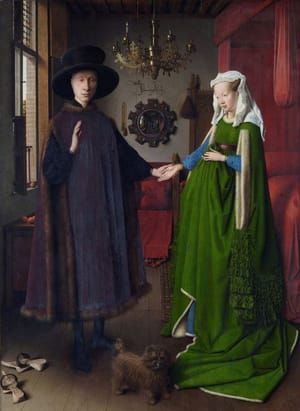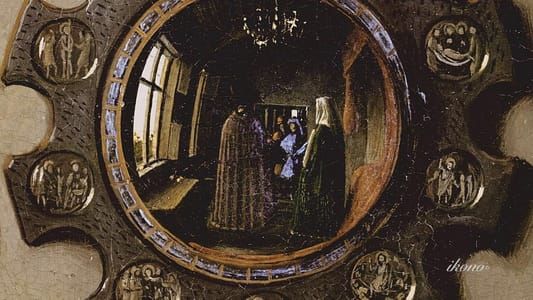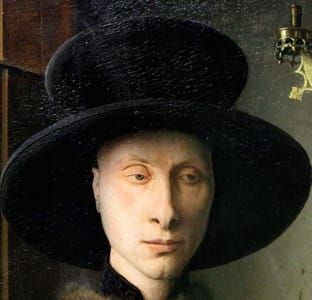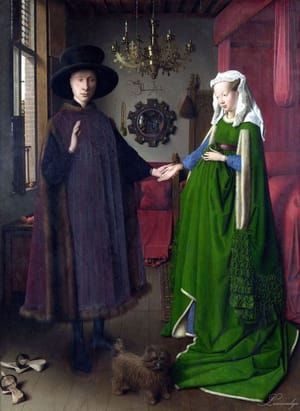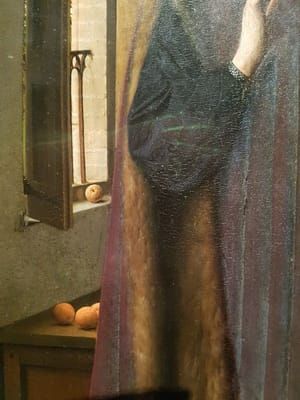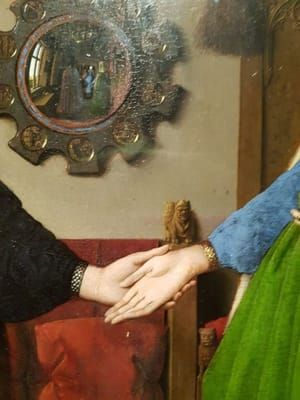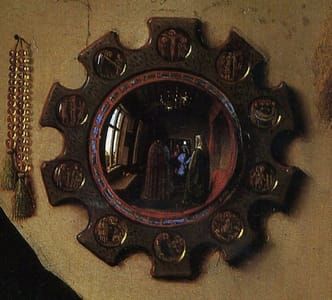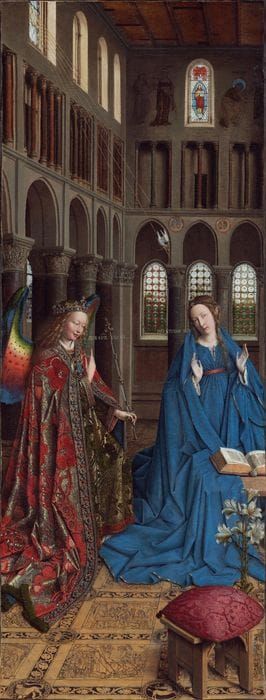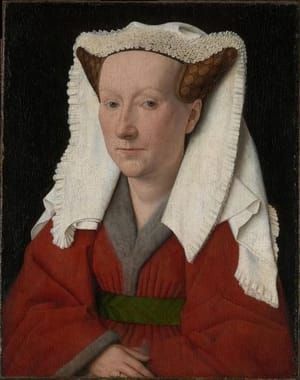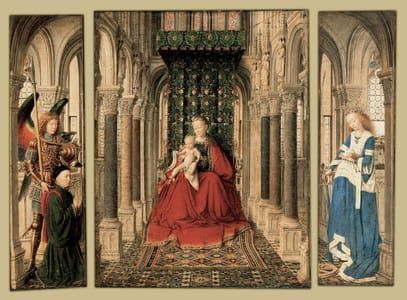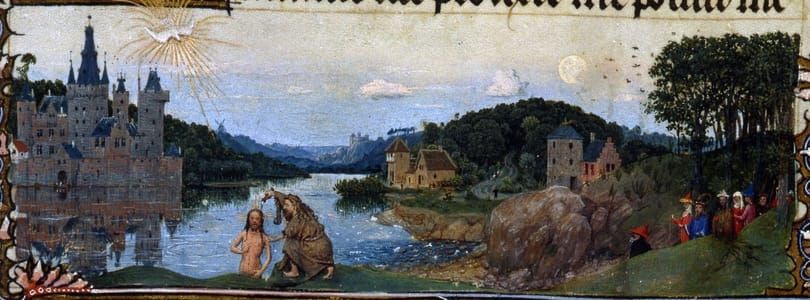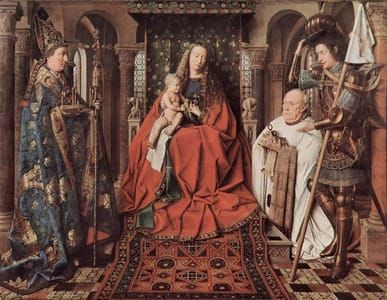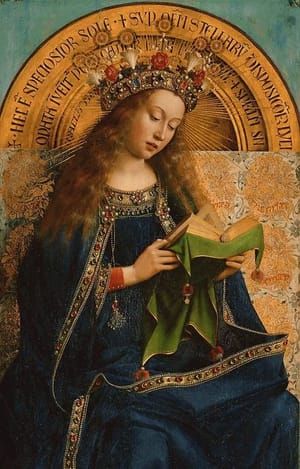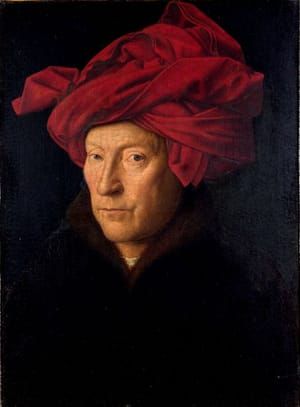

Arnolfini Portrait, 1434
Jan Van Eyck
This painting is important because it is one of the earliest paintings to be made with oil paint. Previously to this, paintings were usually made either with egg tempera or were fresco on plaster walls.
This painting was created with an underpainting of egg tempera and then successive glazes of thin transparent layers of color were applied using a mixture of pigments and linseed oil. This technique of using oil paint allows the artist to be able to shade and blend more accurately and realistically.
...This painting is also important because it is probably titled incorrectly. (See complete article at https://www.linkedin.com/pulse/arnolfini-kenney-mencher)
This painting is rife with symbolism, and has been called one of the most complex and original paintings in Western art history. Some say that it was painted to be a document as proof of the wedding between the man and woman. Colors and placement of figures play a large part in the symbolism of the painting as well as purposely placed objects in the room. The little dog in the foreground symbolizes fidelity, while the oranges on the chest may refer to fertility. The cast aside clogs are a traditional symbol of the wedding, and the single candle refers to the light of God. Upon close inspection of the spotless mirror in the background, you can see the reflection of the artist as well as the couple, and above the mirror is the inscription "Johannes de eyck fuit hic, 1434," translated, "Jan van Eyck was here." This painting is currently housed in The National Gallery in London, and is an oil on oak wood panel painting.
(https://www.artexpertswebsite.com/pages/artists/vaneyck.php)
The Jan van Eyck painting initiates the use of mirrors as objects in portraiture....
The Arnolfini Wedding Portrait acts as the father of mirror-play in modern portraiture. While he was commissioned to create the portrait of the male of female figures swearing a marital oath, van Eyck does not cease to demonstrate both his conceptual and mechanical skills by painting the extraordinarily ornate mirror situated in the space between the figures. When looking closely, the viewer can see that van Eyck paints himself in the mirror, from the perspective he possessed while painting the larger portrait. By doing so, van Eyck installs what is called a “double-portrait,” and opens the doors for a wealth of artists after him to investigate the use of mirrors as objects in painting, highlighted especially in the rest of this exhibit. Van Eyck’s portrait displays his mastery not only through his inclusion of the mirror, but also by his fine attention to detail concerning each object in the painting, as well as his injection of hidden symbolism throughout the work.
(http://covenantarthistory.blogspot.nl/2015/04/through-looking-glass-mimicking-mirrors.html)
Added views show a hidden self portrait of the artist van Eyck himself in the reflection of the convex mirror .
Acquired in 1842, when the National Gallery was just 18 years old, The Arnolfini Portrait captivated the Victorian audience, as is demonstrated in an article dedicated to the painting in The Illustrated London News. At that time the work was a rare example of Early Netherlandish painting that could be seen in this country – to this day, the National Gallery remains the only UK public collection that holds works by Jan van Eyck.
(http://arthistorynewsreport.blogspot.nl/2017/)
Uploaded on Mar 12, 2018 by Samantha Robbins
Jan Van Eyck
artistArthur
Wait what?
